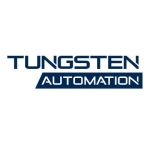I use this solution for product mining and docking.
The valuable features really depend on your particular use case. We can easily identify based on your needs and prioritize accordingly.
Improvement depends on whether I can get the input information to explain why the exceptions are happening. Is it because of different policies or incorrect procedures being applied? If that information would also be integrated as part of it, it would make my life easier.
How the input is received from the medium and assimilated is important. The kind of application that we are using to process the particular process also plays a role.
I would like to know what the exceptions are when they occur. Is it because of the process selected needs or is it because of policy, legal issues, or incorrect procedural obligation? That would really help me.
In general, if they can provide the exceptions, as well as why those exceptions are happening from the input side and what applications had been used to process the information, it would be much easier for me.
This is a stable product.
ProcessGold is definitely scalable.
You should integrate this solution with process re-engineering also. For example, right now we have more focus on automation and intelligent automation in the UI path. At certain times, it can be costly to do automation or real-time automation. A customer might be looking towards the future.
I would rate this solution as eight out of ten.












